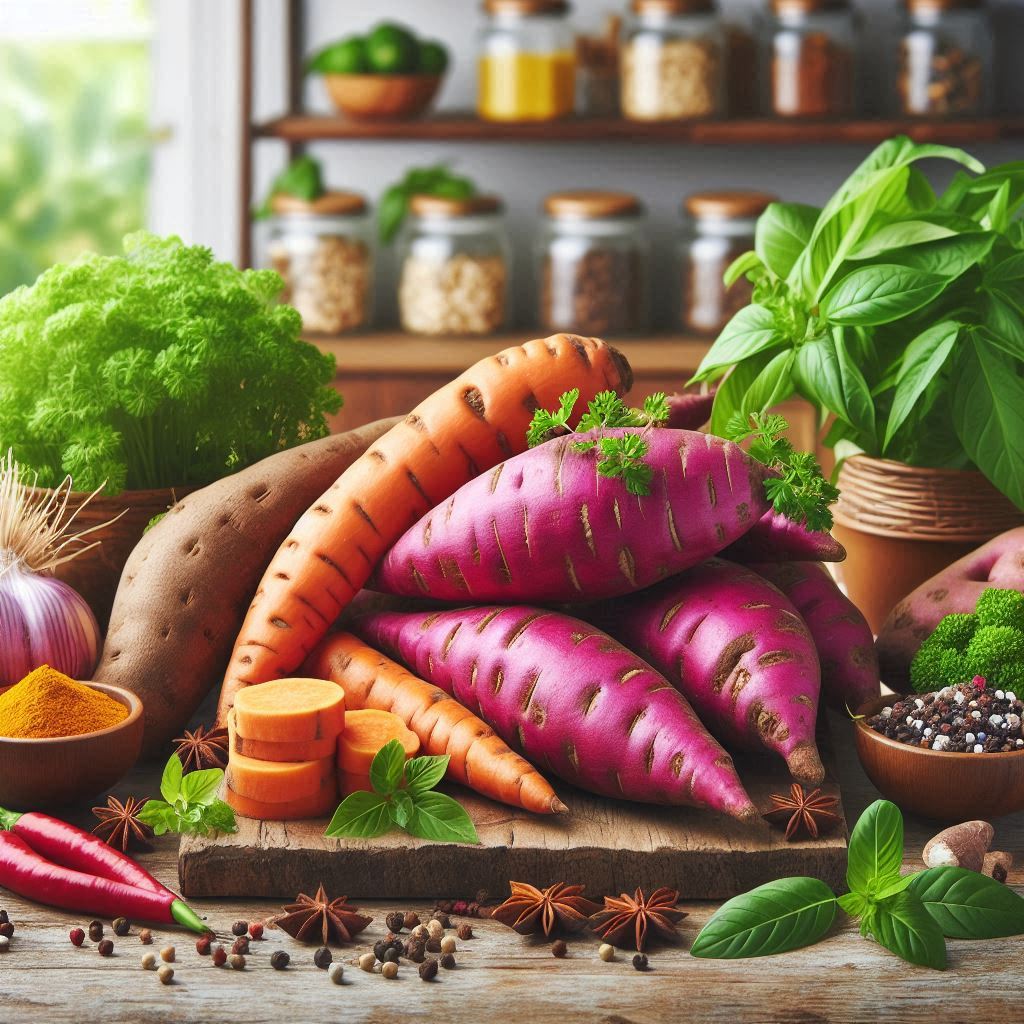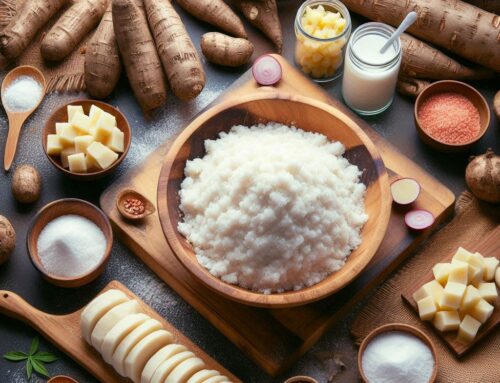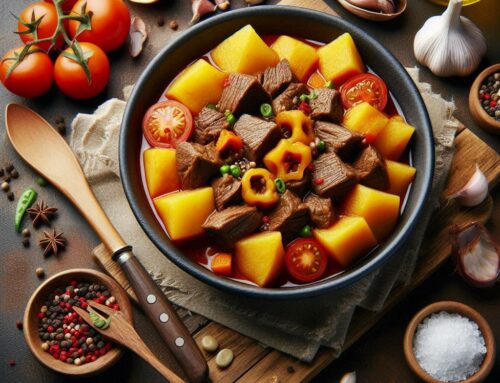
Introduction: Understanding Cassava and Sweet Potato
Cassava and sweet potato are two remarkable root vegetables that have been staples in diets around the world for centuries. Known for their versatility and nutritional benefits, these tubers offer a wide range of culinary uses that make them indispensable in many cuisines.
Cassava, also known as manioc or yuca, is native to South America but has spread widely across Africa and Asia due to its adaptability to various climates. It is an excellent source of carbohydrates and is often used to produce tapioca pearls, flour, and chips. Cassava must be cooked properly before consumption to eliminate naturally occurring cyanogenic compounds.
Sweet potatoes, on the other hand, are celebrated not only for their sweet flavor but also for their rich supply of vitamins A and C. Originating from Central America, sweet potatoes have become a global favorite thanks to their ability to be prepared in numerous ways—roasted, mashed, or even baked into desserts.
Both cassava and sweet potatoes offer unique textures and flavors that enhance a variety of dishes. Whether boiled into stews or fried as snack, these root vegetables provide essential nutrients while adding depth to culinary creations worldwide. Understanding their properties allows us to appreciate the significant role they play in both traditional recipes and modern gastronomy.
Nutritional Breakdown: Cassava vs. Sweet Potato
When it comes to choosing between cassava and sweet potatoes, understanding their nutritional profiles can help you make informed dietary decisions. Both of these root vegetables offer unique benefits, but they differ significantly in their nutritional content.
Cassava is a starchy tuber that is a staple food in many tropical regions. It is high in carbohydrates, making it a robust energy source. Cassava nutrition facts reveal that it contains essential vitamins such as vitamin C and folate, although it lacks the vitamin A present in sweet potatoes. One notable characteristic of cassava is its low protein and fiber content compared to other tubers.
On the other hand, sweet potatoes are celebrated for their rich nutrient profile. Sweet potato nutrition facts highlight their high levels of beta-carotene, which the body converts into vitamin A—an essential nutrient for eye health and immune function. Additionally, sweet potatoes provide more dietary fiber than cassava, contributing to better digestive health and prolonged satiety.
While both vegetables offer distinct vitamins—cassava with its folate and vitamin C, and sweet potatoes with their abundant beta-carotene—the choice between them may depend on your specific nutritional needs. For those seeking higher fiber intake or aiming to boost vitamin A levels naturally, sweet potatoes might be the preferred option. However, if you’re looking for an energy-dense food with a different flavor profile to diversify your diet, cassava could be an excellent addition to your meals.
Health Benefits of Cassava and Sweet Potatoes
Cassava and sweet potatoes are not only versatile in the kitchen but also pack a punch when it comes to health benefits. Both of these root vegetables offer unique nutritional profiles that can contribute positively to your diet.
Starting with cassava, one of its standout features is the presence of resistant starch. This type of starch acts similarly to fiber, passing through the digestive system largely unchanged. Resistant starch can aid in promoting gut health by feeding beneficial bacteria in the colon, potentially improving digestion and reducing inflammation. Furthermore, it may help regulate blood sugar levels by slowing down digestion and absorption, making it a smart choice for those managing diabetes or insulin resistance.
Sweet potatoes, on the other hand, are renowned for their rich antioxidant content. These antioxidants include beta-carotene, which is converted into vitamin A in the body and is crucial for maintaining healthy vision and skin. The vibrant orange hue of sweet potatoes signals their high antioxidant levels, which help combat oxidative stress and may reduce the risk of chronic diseases such as heart disease and cancer. Additionally, sweet potatoes are an excellent source of dietary fiber and essential vitamins like vitamin C and potassium.
Incorporating cassava and sweet potatoes into your meals not only diversifies your diet but also provides a host of health benefits that support overall well-being. Whether you’re looking to improve gut health or boost your intake of antioxidants, these root vegetables offer delicious ways to enhance your nutrition naturally.
Culinary Uses and Preparation Methods for Cassavas and Sweet Potatoes
Cassavas and sweet potatoes are versatile root vegetables that can be incorporated into a wide array of dishes, each offering unique flavors and textures. When cooking with cassavas, it’s essential to first peel and thoroughly cook them to eliminate any naturally occurring toxins. A popular method is boiling, which softens the cassava for use in recipes like cassava fries or mash. Alternatively, baking enhances their nutty flavor and creates a delightful crispness perfect for casseroles or as a standalone side dish.
Sweet potatoes, on the other hand, shine with their natural sweetness and adaptability in both savory and sweet recipes. Boiling sweet potatoes is an excellent way to retain their moisture for mashes or soups. Baking them brings out their caramelized sugars, making them ideal for dishes such as baked sweet potato wedges or pies.
Both cassavas and sweet potatoes can be combined in innovative recipes that highlight their complementary qualities. For instance, a mixed root vegetable hash uses both boiled cassavas and baked sweet potatoes to create a satisfying blend of textures. Whether you prefer the simplicity of boiling or the depth of flavor from baking, cooking with these root vegetables opens up endless culinary possibilities that are sure to delight any palate.
Potential Risks & Considerations When Consuming Cassavas and Sweet Potatoes
When it comes to consuming cassavas and sweet potatoes, understanding the potential risks and considerations is crucial for ensuring safety. One of the primary concerns with cassava consumption is its raw form, which can be hazardous due to the presence of cyanogenic glycosides. These naturally occurring compounds can release cyanide when improperly processed or consumed raw, posing significant health risks. Therefore, it is essential to thoroughly peel, soak, and cook cassavas to reduce these dangers effectively.
In addition to processing concerns with cassavas, individuals should also be aware of potential allergic reactions associated with sweet potatoes. While relatively uncommon, allergies can manifest as symptoms like itching or swelling after consumption. It’s important for those who suspect an allergy to seek medical advice and possibly undergo testing before including sweet potatoes in their diet.
By being informed about these safety concerns—such as the risk factors related to cyanide in cassavas and possible allergies to sweet potatoes—consumers can make better dietary choices that minimize health hazards while enjoying these nutritious root vegetables.
Cassavas or Sweet Potatoes: Which is More Sustainable?
When it comes to evaluating the sustainability of growing cassavas versus sweet potatoes, several factors need to be considered, including water usage, land efficiency, and environmental impact. Cassavas are often praised for their resilience in harsh climates and poor soils. They require less water compared to many other staple crops, making them a viable option in regions prone to drought. This characteristic contributes positively to their sustainability profile.
On the other hand, sweet potatoes are known for their relatively low environmental footprint as well. They can thrive in various soil types and climates with minimal inputs. Sweet potatoes also have a shorter growing cycle compared to cassavas, which means they can be harvested more frequently throughout the year.
In terms of environmental impact comparison, both crops have their advantages. Cassavas can grow in depleted soils without significant fertilizer inputs, which helps reduce potential chemical runoff into waterways. However, they do require careful management of cyanogenic compounds that can be harmful if not processed correctly.
Sweet potatoes offer nutritional benefits that complement their sustainable growth characteristics. Their ability to provide high yields with less land makes them an attractive option for food security initiatives while keeping ecological disturbance low.
Ultimately, choosing between cassavas and sweet potatoes depends on specific regional conditions and priorities related to sustainability goals. Both crops offer unique benefits that contribute positively towards sustainable agriculture when managed effectively.
Conclusion: Making an Informed Choice Between Cassavas or Sweet Potatoes for Your Diet
When deciding between cassavas and sweet potatoes for your diet, it’s essential to consider their nutritional profiles, culinary versatility, and potential health benefits. Cassavas are a staple in many tropical regions and are known for their high carbohydrate content, making them an excellent energy source. However, they require careful preparation to remove naturally occurring cyanogenic compounds.
On the other hand, sweet potatoes offer a rich supply of vitamins A and C, fiber, and antioxidants. They are versatile in the kitchen and can be roasted, mashed, or baked into delicious dishes that both satisfy hunger and contribute to a balanced diet.
Ultimately, the choice between cassavas or sweet potatoes should align with your dietary needs and taste preferences. Consider incorporating both into your meals to enjoy their unique flavors and nutritional benefits. By understanding what each root vegetable offers, you can make an informed decision that supports your health goals while adding variety to your diet.






